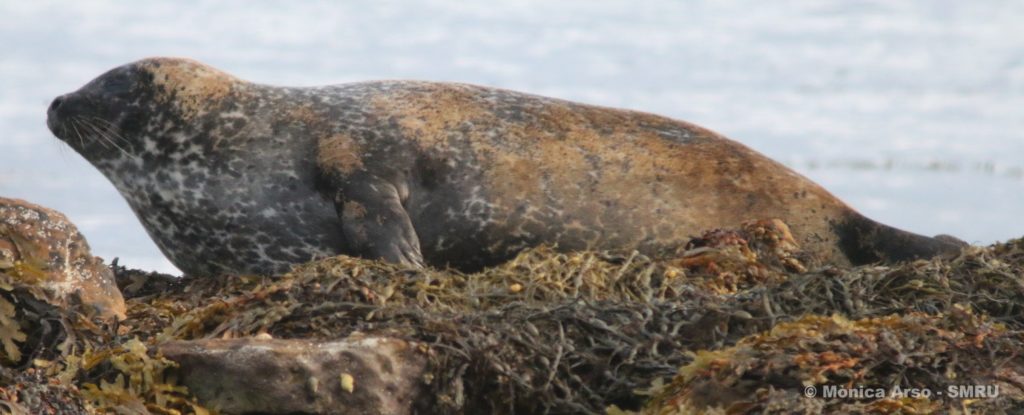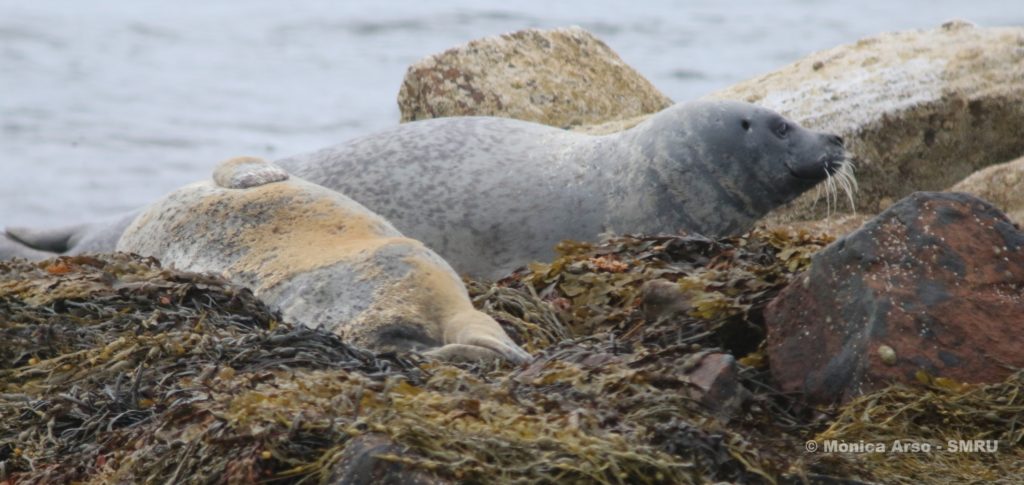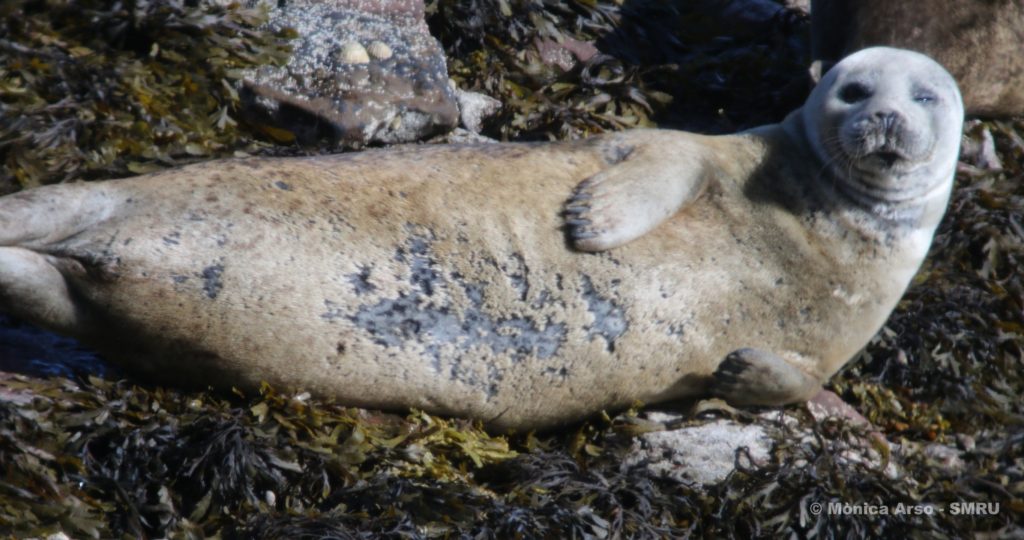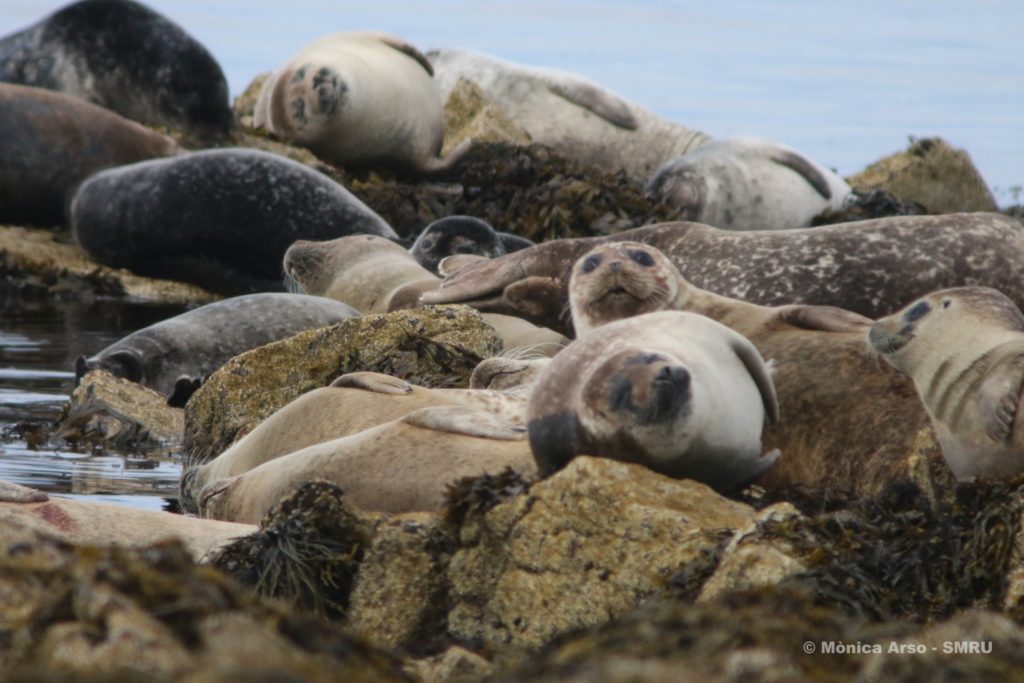We are approaching the end of the fieldwork season for this summer, which means the seals already have or are about to start their annual moult. All seals undergo an annual moult during which they progressively lose and regrow their hair. For harbour seals, and in Scotland, moult season starts sometime at the end of July or start of August. The first seals to do so are the yearlings, which are the seals born the previous summer, by now over a year old and thus the ones with the oldest coat compared to the other age classes. During that period, the pattern of spots that we normally use to ID each individual seal is much more difficult to distinguish as it temporarily disappears under the old brown hair.

At the haul out sites I visit in Orkney some of the yearlings and younger seals are well under way with their moult, as you can see in the picture above. The new hair, which is much darker, shows under the brown old hair, making them more similar to this year’s pups. Sometimes I need to think about it twice to decide if a seal is a yearling or one of the bigger pups from this year!


A study by colleagues at SMRU looked at how harbour seals regulated their surface temperature during the moult (a link to the published paper can be found here). The study showed that when moulting, the seals’ skin got very hot as they must circulate blood close to the skin surface to allow hair to grow quickly. That requires spending a lot of energy during the moult. To avoid losing too much heat, the seals increase the periods of time spent ashore, and spend less time in the cold water where they would become chilled.

With the end of pupping season and the start of the annual moult, the haul outs are now busy, with the new pups from this year and the rest of the seals about to or already moulting and needing to spend more time ashore. This brings memories of what the haul out looked when I visited it around this time last summer.

With this number of seals the best spots to haul out are quite precious, and everyone is keen on getting them. Higher spots, those that will remain dry for longer as the tide comes up are especially good, as well as those that offer shelter from the wind and water spray on bad weather days. In the video below, a juvenile (on the right) has his eye on one of those perfect places, though occupied by an adult and much bigger seal. But being persistent pays off and he ends up getting it! I’d say he looks quite pleased with himself with this victory. This particular seal is quite easy to spot, as he has what looks like a dark band around his head. Just based on observations, it looks like, and for reasons unknown to us, that he is lacking hair in that area, causing that look.
Despite hauling out together, harbour seals do not seem to like having other seals too close. You can hear them growling and moving their fore flippers when other seals get too close. Even pups get annoyed with other pups or older seals! Last year, while doing fieldwork in Shetland, I observed the two pups in the video below having one of such arguments. If you wonder, the pup that is behind ended up accidentally rolling over himself and falling into the water! He then found another spot to haul out.
https://vimeo.com/176344563
Written by Monica
